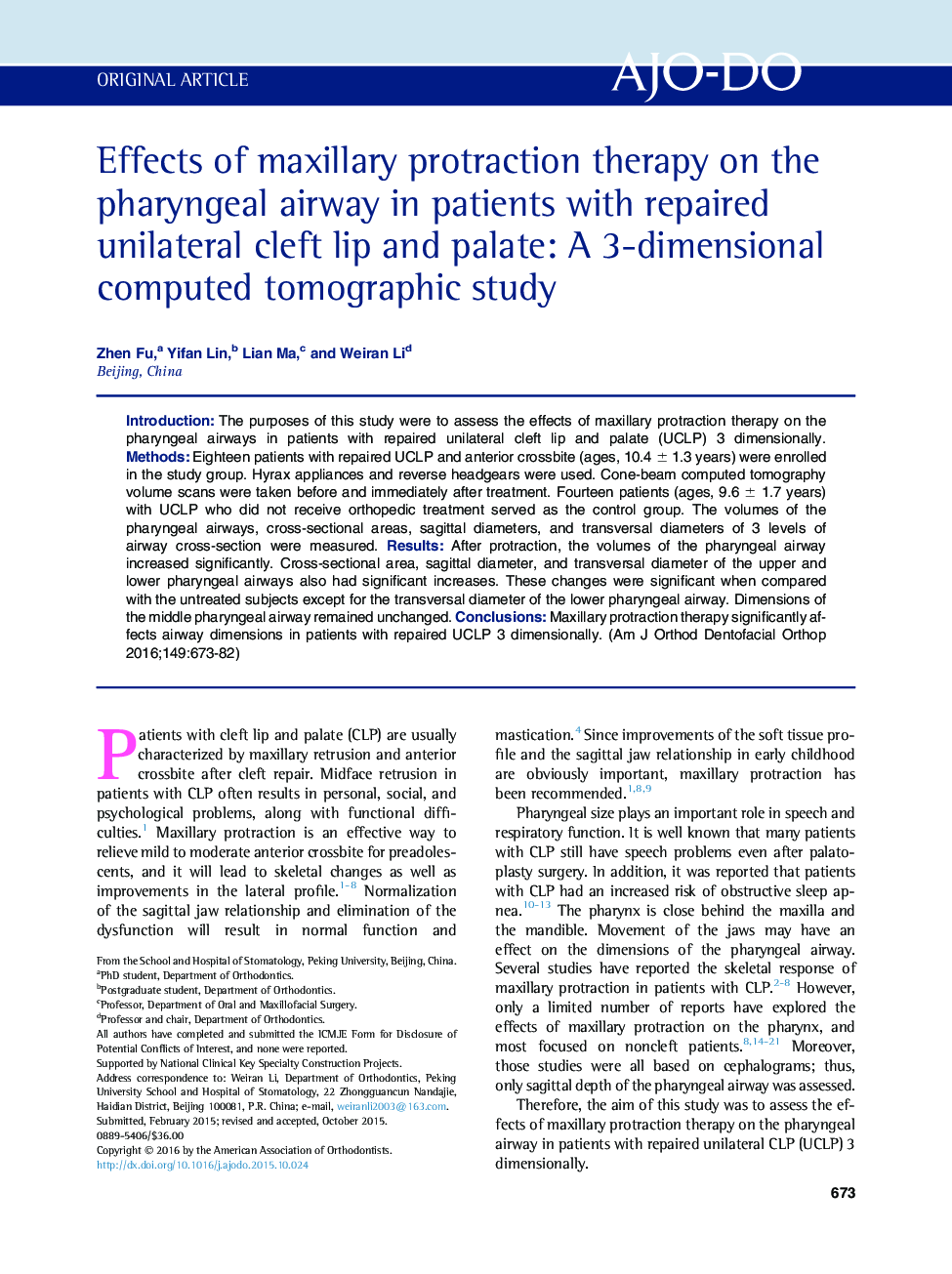| Article ID | Journal | Published Year | Pages | File Type |
|---|---|---|---|---|
| 3115300 | American Journal of Orthodontics and Dentofacial Orthopedics | 2016 | 10 Pages |
•Maxillary protraction of pharyngeal airways in patients with repaired unilateral cleft lip and palate was evaluated.•Patients were successfully treated with advancement of the maxilla and rotation of the mandible.•Volumes of the pharyngeal airway increased.•Dimensions of the upper and lower pharyngeal airways increased.•The middle pharyngeal airway remained unchanged during treatment.
IntroductionThe purposes of this study were to assess the effects of maxillary protraction therapy on the pharyngeal airways in patients with repaired unilateral cleft lip and palate (UCLP) 3 dimensionally.MethodsEighteen patients with repaired UCLP and anterior crossbite (ages, 10.4 ± 1.3 years) were enrolled in the study group. Hyrax appliances and reverse headgears were used. Cone-beam computed tomography volume scans were taken before and immediately after treatment. Fourteen patients (ages, 9.6 ± 1.7 years) with UCLP who did not receive orthopedic treatment served as the control group. The volumes of the pharyngeal airways, cross-sectional areas, sagittal diameters, and transversal diameters of 3 levels of airway cross-section were measured.ResultsAfter protraction, the volumes of the pharyngeal airway increased significantly. Cross-sectional area, sagittal diameter, and transversal diameter of the upper and lower pharyngeal airways also had significant increases. These changes were significant when compared with the untreated subjects except for the transversal diameter of the lower pharyngeal airway. Dimensions of the middle pharyngeal airway remained unchanged.ConclusionsMaxillary protraction therapy significantly affects airway dimensions in patients with repaired UCLP 3 dimensionally.
